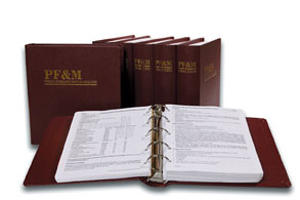|
PF&M at a Glance Aircraft and aviation insurance
With nearly 236,000 private pilots in the country, according to the Federal Aviation Administration (FAA), there is a good chance that agents will receive a request for some type of aviation insurance, since aircraft liability is excluded under the CGL form. Because this is a highly specialized area, most of the insurers that provide coverage do so through wholesalers. A list of specialists in aircraft and aircraft related coverages are available in The Insurance Marketplace, published by The Rough Notes Company. The Insurance Marketplace is also available online at www.insurancemarketplace.com. Aircraft insurance combines both the property insurance for the hull and liability coverage for bodily injury and property damage arising out of the ownership or use of the insurance aircraft. Aviation insurance includes the operation of aircraft owned and used, involving hulls, liability, passenger liability, airport, and hangarkeeper’s liability. There is no standardized aircraft policy but there are similar coverages provided by insurers that specialize in this coverage. Pleasure, business, and commercial aircraft policies all consist of physical damage to the aircraft, bodily injury (to passengers and others), property damage (to property of passengers and others), and medical payments (for the insured and passengers). Business and pleasure use are often combined. Commercial use is separate. Business and pleasure use involves using an aircraft as a mode of transportation or entertainment for the owner. Generally, a risk is evaluated by using such factors as pilot qualifications, aircraft used, the type and value of the aircraft, and any other extensions of standard coverages. Commercial use normally includes leasing, renting, servicing or some other activity that involves making an income from the use of an aircraft. There are four major classes of aircraft owners/operators: Business and Pleasure operators—This category consists of individuals, businesses or corporations that own and operate aircraft for both business and pleasure. However, they usually do not employ professional, full-time pilots. When a business owns or operates aircraft, often the president or a chief executive officer is the principal pilot. Industrial Aid operators—Typically refers to corporations which own aircraft and employ full time, highly-skilled professional pilots to fly them. Fixed Base Operators (FBOs)—These are airport-based businesses which own, operate, buy, sell, rent, and lease aircraft. They also provide a variety of aviation-related services including fueling, repairs, flight instruction, etc. Flying Clubs—These are non-profit organizations composed of at least three individuals who jointly own and operate all aircraft, but strictly for pleasure use. A pilot can be the owner of the aircraft or can be an employee of the person or organization that owns the insured aircraft. The pilot must meet the FAA criteria for operating the type of aircraft being insured. Generally, a pilot must have a regular physical, have completed flight instruction and pass licensing exams. Insurance can be purchased when a pilot is still considered a student pilot, but the student pilot criteria must be followed. Coverage can be purchased even when no aircraft is owned. Aircraft can be rented with or without pilots under long- and short-term arrangements. Pilots who operate aircraft that they rent or borrow have a serious liability exposure that is excluded by the typical aviation policy. A non-owned aircraft policy covers these renters or borrowers for their liability for bodily injury or property damage caused by the insured pilot. However, the policy does not cover damage to the aircraft being operated by the insured since that coverage should be handled by the owner’s policy. Any commercial ventures with premises and/or product-completed operations that are directly related to the aircraft industry are eligible for aviation insurance coverage. Contractual and products liability coverage can be included in such a policy. Airport operators that own and rent planes to pilots (including student pilots) need hull and liability coverage. In most instances, financial institutions finance the sales of aircraft. Banks and other lenders need physical damage coverage in order to protect their insurable interest in aircraft covered by their loans. There are many other types of coverage available to respond to different aviation needs. The agent or broker should carefully survey all of a prospect’s exposures before submitting an application. Please note that this is only an overview of this subject. A more detailed discussion may be found in the PF&M Analysis from The Rough Notes Company. Agency OnLine subscribers, please refer to PF&M Sections 330.4-2, for more in-depth discussion on Aircraft Coverage Analysis; 330.6-1, for an analysis of an Aviation General Liability Policy; or 330.5-1 to review common underwriting considerations. * |
|
|



